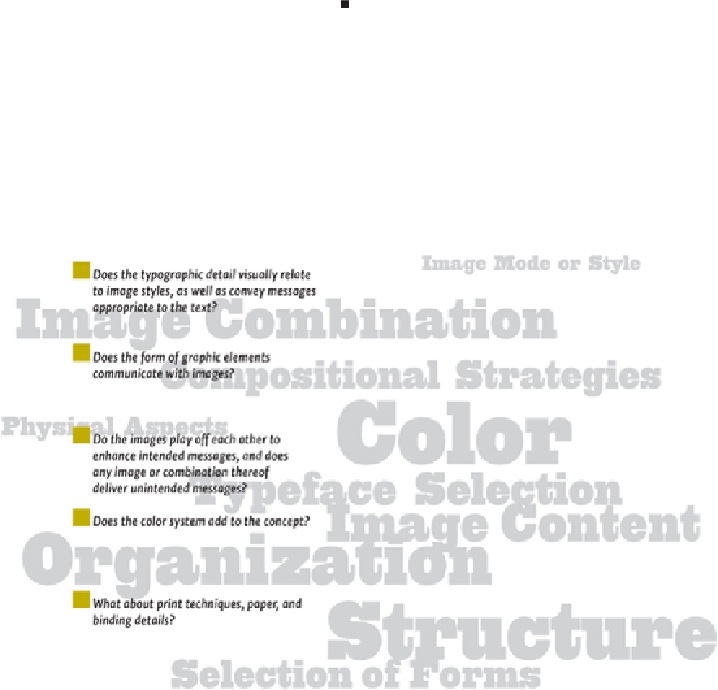Graphics Reference
In-Depth Information
ally, reciprocally reinforcing mood and concept. The arrangement of type and images
should respond to each other visually, and their composition within the format space
should again augment the emotions or associations that are more literally apparent in
the content of both images and writing. Furthermore, the pacing and sequencing of
the content should respond to emphases within the content and create visual highs and
lows—alternations of sequences that are dramatic and sedate—to continually refresh
the viewer. Thoughtful consideration of typographic and abstract details should be ap-
parent in the way they refer to large-scale compositional elements or spatial interaction.
Last, the physical, experiential quality of the work should be considered in the context
of its production medium, whether electronic or printed and bound. When a designer
sees the project through in all these aspects, the result is a powerful totality of experien-
ce: one that is evocative, emotional, useful, enjoyable, and memorable.
A Visual Logic Checklist
It's important to consider the big picture of a design solu-
tion—the concept and overall layout—in light of its internal components to ensure all
of its aspects are interrelated in supporting that concept. At each stage of develop-
ment, evaluate each aspect in combination.

